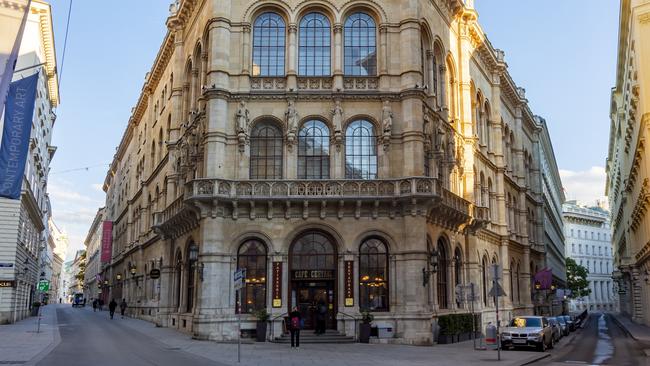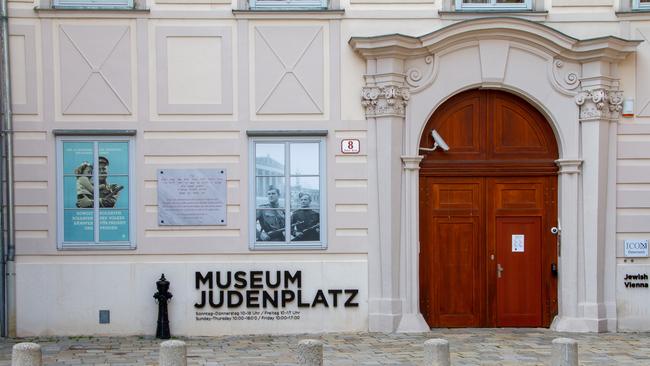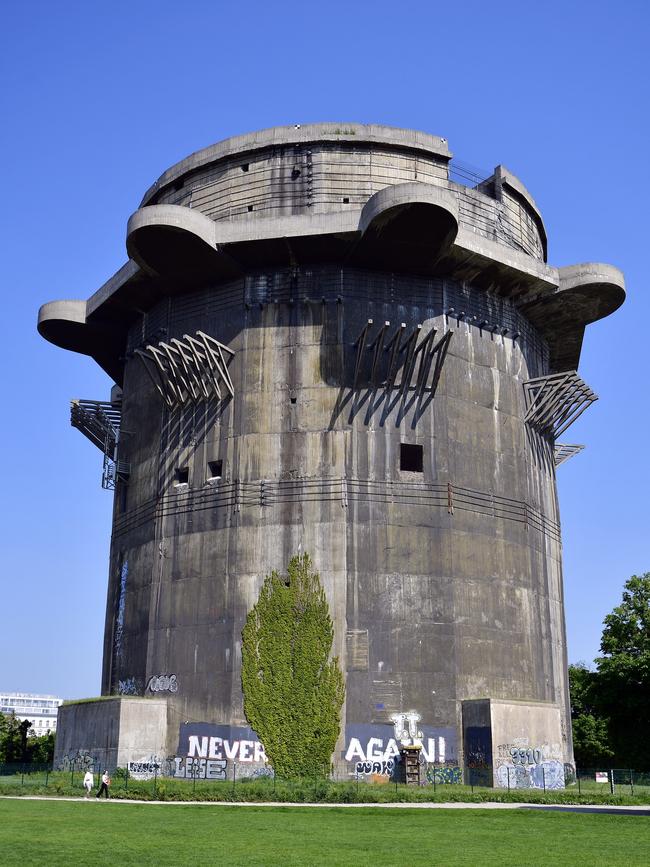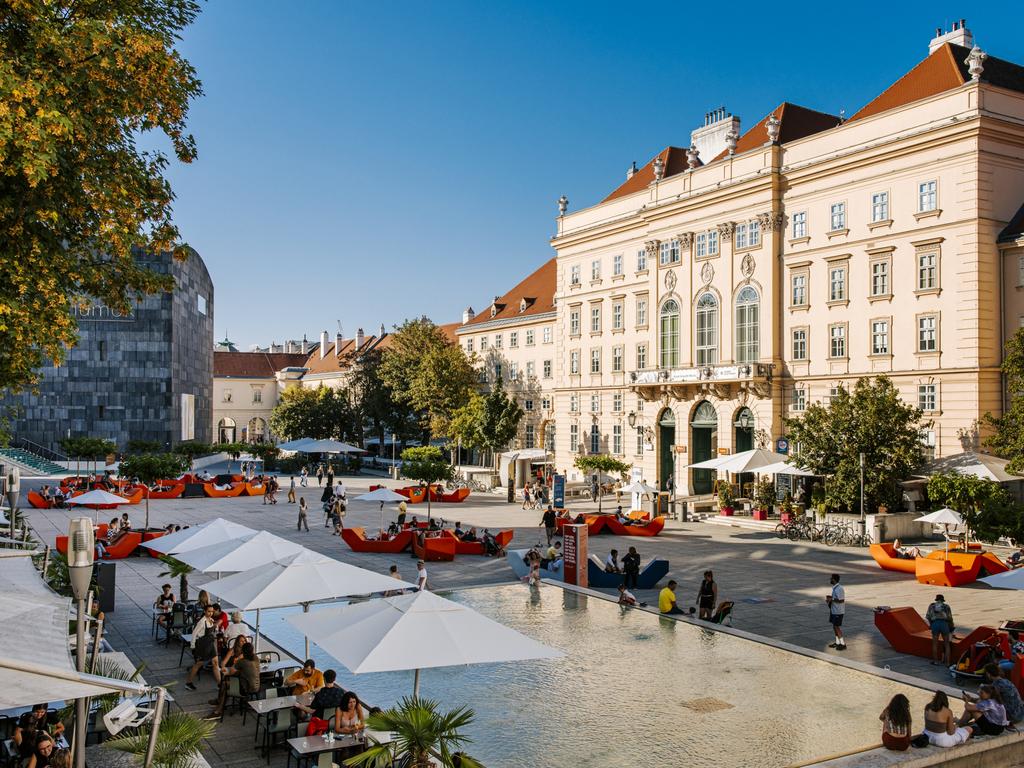Exploring Vienna’s Jewish history
Before my grandfather passed away, I insisted on writing down his stories. It was for a trip like this. It’s enabled me to see the beauty of his childhood and to honour the history of the Jewish community in the Austrian capital.

My first impressions of Vienna, the former home of my Jewish ancestors, are hardly profound. I’ve arrived from Tel Aviv, which has limited flights available given the current conflict, but it’s not history that immediately confronts me. Most noticeable are the wasps. “They’re on the rampage! Emergency doctors in action!” say the newspapers. They are swarming across the city. I’m told the trick is to shoo them away gently, without sudden movements. One of my companions is stung. He’s brave; we keep calm and carry on.
I reunite with friends from Israel at Balthasar, a trendy coffee shop on the beautiful, tree-lined Praterstrasse. I’m pleasantly surprised to discover that their “basic” German is the understatement of the century, and put them to work on a historical German document I need translated. It turns out they are also good with small, antique fonts, as the print is impossibly tiny and ornate.
Famous for its record-keeping, Vienna’s library digitised the city’s old address directories a number of years ago. I have a 1939 entry with my family’s name and my friends help to decipher the entry that confirms the last place my grandfather lived before fleeing to France and then Australia. There’s another entry that makes me shudder; the name of the family business signed by a “commissioner” appointed by the Nazis stating that they no longer had any rights. I already knew this, but it’s confronting to see it in black and white. That’s a lot to digest on day one, so I fold up my history and tuck it into my bag where it stays for the next few days.

The capital of the Habsburg Empire for centuries, Vienna’s architectural legacy overflows with ornate mansions and Art Nouveau buildings. The opulence peaks at Schonbrunn Palace, the summer residence of Empress Maria Theresa. There’s more than 1000 rooms but the standard ticket that gives access to four gilded and gaudy apartments is plenty. Time is better spent exploring the spectacular gardens with their statues, fountains and vine-covered walkways.
Maria Theresa was Marie Antoinette’s mother, so it seems fitting to take a cake break. Vienna’s famous coffee house culture dates back to the 19th century when the cultural and intellectual elite treated cafes like their living rooms. Cafe Centrale is one of the city’s grandest and oldest, and after some arduous decision-making we devour Esterhazy, a divine torte made from buttercream sandwiched between layers of almond meringue, and Austrian specialty Kaiserschmarren, a fluffy shredded pancake with stewed plums.

In a food coma, we rest and recalibrate at the Augarten, a sprawling former hunting ground that is now a gated park and home to the Vienna Boys Choir. Lined with shady avenues of maple trees and vivid flower beds, its tranquillity has an eerie quality, with two massive anti-aircraft flak towers looming in the background. A reminder of Austria’s culpable Nazi past, the site is graffitied with the words “Never Again”.
While it overflows with history, Vienna also oozes vibrancy. Nowhere is this more evident than at the Museum of Applied Arts Vienna, an exceptional contemporary museum with rotating exhibits that also holds the archives of avant-garde fashion designer Helmut Lang. We make sure to swing past at night, when the Renaissance-style facade glows with neon lights illuminating the windows as part of a permanent installation by legendary American artist James Turrell.
Known as more of a winter city, Vienna does a great job of summer too. Man-made sand bars and even a floating pool have popped up along the Danube and the ingenious Sommerspritzers are scattered throughout the city. The subtle mist-cooling contraptions gently spray passers-by with a light shower of alpine water, offering welcome respite in this unseasonably hot September.

I set out to find Franz Josefs Kai, the street on which my grandfather lived until 1939 when he was forced to flee. It’s just 10 minutes from where I’m staying overlooking the Danube. A slick penthouse perches on the milky-white Baroque building and a contemporary gallery is on the ground floor. My grandfather once told me that Hitler paraded in front of the building to cheers from friends and neighbours. It was a story that gave me chills but now, especially in today’s climate, I understand that his story was also about deep betrayal.
Vienna’s Jewish Museum has two locations. One, on Dorotheergasse, focuses mostly on the community from 1945. Although small, it is worth visiting to see the collection of highly polished sterling silver religious artefacts. Their beauty is mesmerising, but the museum makes it clear that many were stolen from their rightful owners. It’s disturbing to consider the violence with which each item was wrested from Jewish hands.
The other site, Judenplatz, in the square of the same name, is delving into this very issue with an exhibition called Theft, which traces the furniture, art and objects that were seized, looted or added to museum collections over the years.

It wasn’t until the mid-1990s that Austria finally admitted its culpability in the Holocaust, and the exhibition covers the ongoing process of restitution. I think of my grandfather and his parents, betrayed by their maid, closing the door to an apartment and their belongings – all they had worked hard for – but would never see again. Wandering through Vienna’s storied streets, past ornate imperial palaces and neo-gothic buildings, I’m particularly struck by the Heldenplatz (Heroes Gate), where Hitler announced the Anschluss. It was the speech that changed everything. Overwhelmed, we end the day by decompressing at C.O.P., a restaurant with a produce-driven menu that changes regularly but for the chunky sourdough with creamy caramelised butter. It’s a mainstay and I feel robbed having lived this long without such a heavenly condiment. My dining companions decline dessert but I order three anyway and we scrape off every morsel.
Before my grandfather passed away, I insisted on writing down his stories even though he never could understand why it was so important to me. It was for a trip like this. It’s enabled me to see the beauty of his childhood and to honour the history of the Jewish community of Vienna. And in light of today’s raging anti-Semitism, it is a trip more meaningful than I ever could have imagined.
Carli Phillips travelled at her own expense.



To join the conversation, please log in. Don't have an account? Register
Join the conversation, you are commenting as Logout